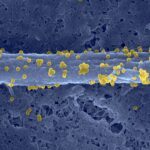Link to Pubmed [PMID] – 33880703
Link to DOI – 10.1007/s10875-021-01043-1
J Clin Immunol 2021 Aug; 41(6): 1266-1271
Outcome of patients with X-linked agammaglobulinemia (XLA) has improved with the widespread use of immunoglobulin replacement therapy (IgRT). There are few data on the spectrum of infections experienced by patients undergoing IgRT. We carried out a retrospective cross-sectional analysis of the records of XLA patients seen at Necker-Enfants Malades Hospital, Paris. For each infection, we evaluated infection site, microbial etiology, antibiotic prophylaxis, immunosuppressive treatment, IgRT route, and last known IgG trough level. Sixty patients were included, who cumulated a follow-up of 1470 patient-years. We recorded 188 infections, including 97 after initiation of IgRT. The rate of infection was highest before IgRT (0.66 vs. 0.06 per person-year (ppy), p < 0.001) and was higher after the age of 16 compared to before (0.14 vs. 0.05 ppy, p = 0.048). It was similar for patients receiving intravenous or subcutaneous Ig (0.09 vs 0.05 ppy, p = 0.54). The lungs and gastrointestinal tract accounted for 71% of infection sites. Forty-six (47%) infections occurred in patients receiving antibiotic prophylaxis. Sixteen (16.5%) infections occurred in patients receiving immunosuppressive therapy, which more frequently occurred after age 16 (35% vs. 2.4%, p 8 g/L, and 16/97 (16.7%) in patients with trough levels > 10 g/L. Infection remains a significant issue in patients with XLA undergoing IgRT despite adequate IgG trough levels. Chronic inflammatory manifestations of X-linked agammaglobulinemia and immunosuppressive therapies may be significant drivers of infection during adulthood.

